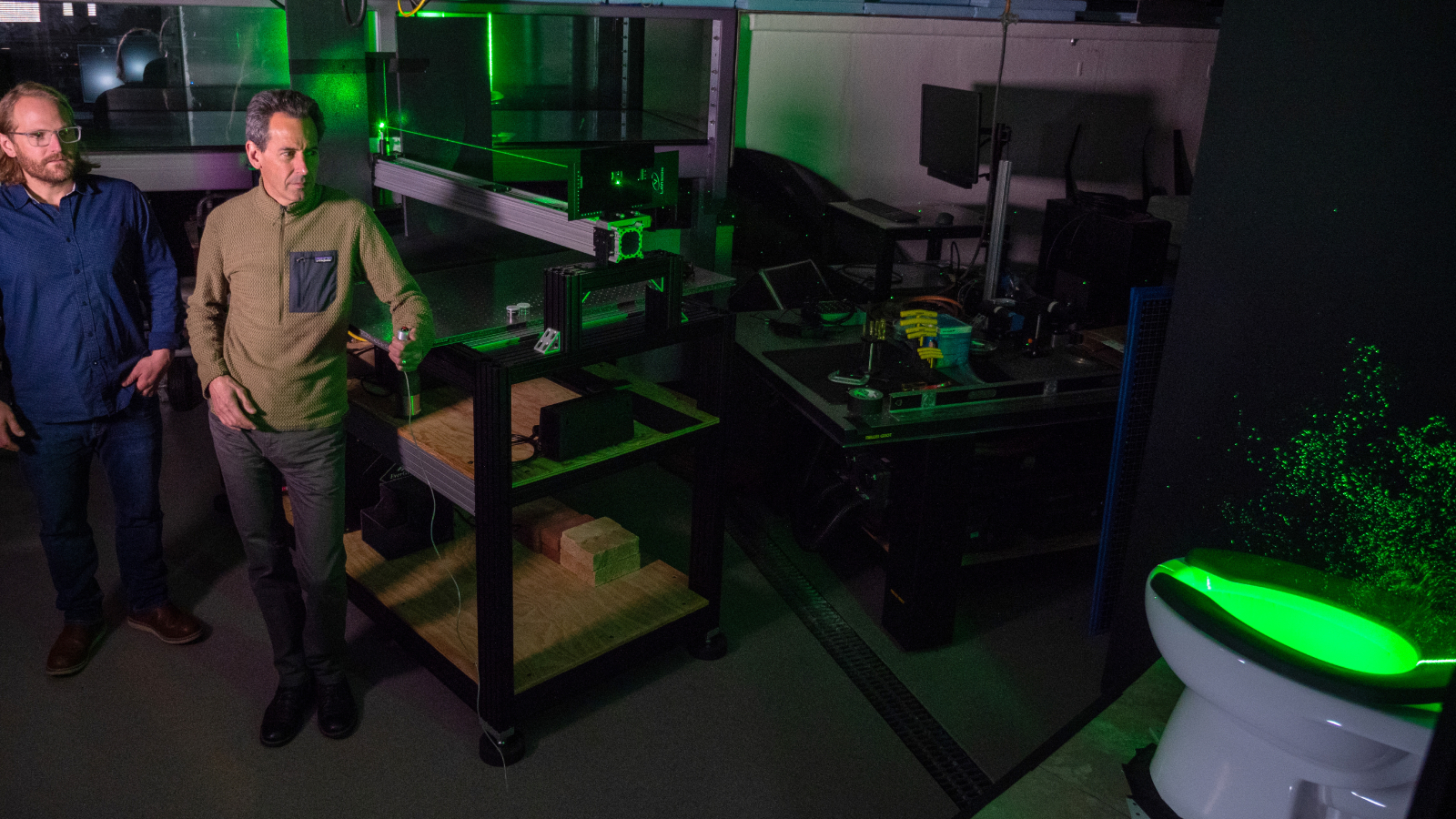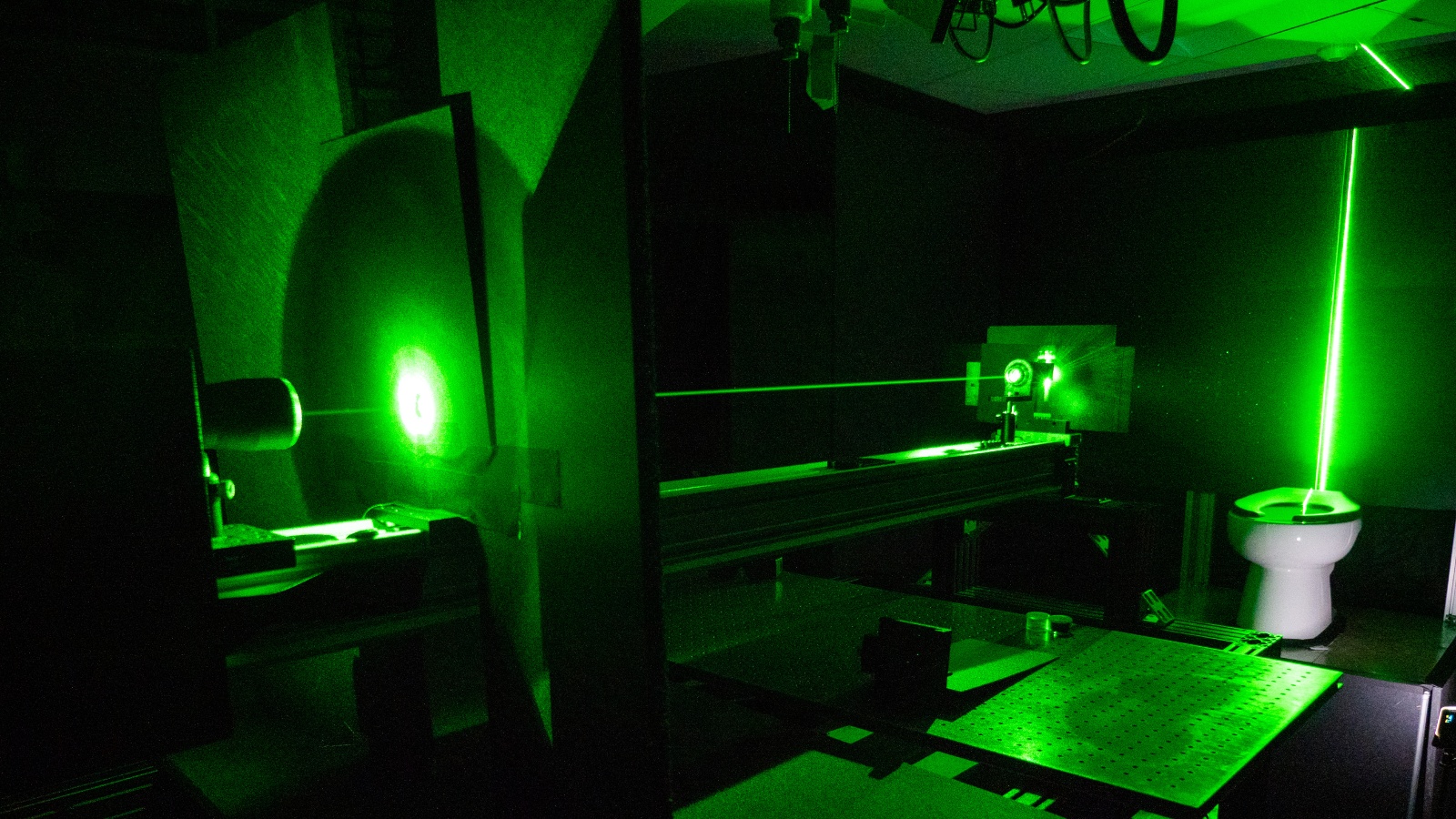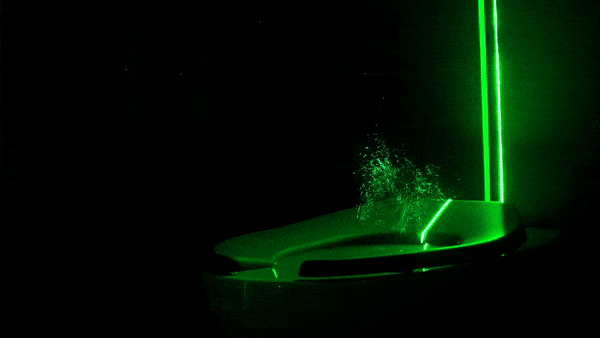Uncovered toilets shoot out aerosol plumes 'like a rocket' in laser-illuminated videos
In a new experiment, researchers used lasers to highlight airborne particles that are given off when uncovered toilets are flushed, which could spread dangerous pathogens.
Unnerving new videos show how gross it can be to flush toilets without a seat cover, particularly when using public restrooms. The stomach-turning footage shows how aerosol plumes shoot out of toilet bowls "like a rocket" when they are left uncovered.
When a toilet is flushed it doesn't just wash away the solids and liquids that we leave behind, it also ejects a near-invisible cloud of microscopic droplets that, in the past, have been shown to spread harmful pathogens found in feces, including bacteria and viruses, that can remain in a toilet bowl even after several flushes.
In a new study, published Dec. 8 in the journal Scientific Reports, researchers used vibrant green lasers to illuminate aerosol plumes given off after flushing a lidless toilet, similar to those used in public bathrooms. Once these plumes were illuminated, the team used special high-speed cameras to film how the minuscule droplets moved through the air and track how far they spread. The results were much more alarming than even the researchers had initially predicted.
"If it's something you can't see, it's easy to pretend it doesn't exist," study lead author John Crimaldi, a geoenvironmental engineer at the University of Colorado Boulder, said in a statement. "But once you see these videos, you're never going to think about a toilet flush the same way again."
Related: FDA approved a 1st-of-its-kind treatment made from human poop. What does it do?
Scientists have known for around 60 years that uncovered toilets emit aerosols, and past studies had detected how far the aerosols could potentially reach. But until now, exactly how the plumes formed, how quickly they moved and how long aerosols persisted had remained a mystery.
The new videos revealed that these airborne particles shoot out at speeds of 6.6 feet (2 meters) per second. This propulsion allows them to reach 4.9 feet (1.5 m) above the toilet within 8 seconds, which "is a much more energetic and rapidly spreading plume than even the people who knew about this understood," Crimaldi said. "We had expected these aerosol particles would just sort of float up, but they came out like a rocket."
Get the world’s most fascinating discoveries delivered straight to your inbox.
The experiments also highlighted that the size of airborne particles can affect how long they remain suspended in the air. While the largest droplets tended to settle onto surfaces within seconds, the smaller particles, less than 5 microns (0.0002 inches) across, can remain suspended in the air for minutes or longer, the researchers wrote in the statement.
Pathogens that lurk in feces include bacteria such as E. coli and C. difficile, as well as noroviruses and adenoviruses, which can all cause serious stomach and intestinal problems. The virus that causes COVID-19 can also be found in human waste, but it is unclear if it can be transmitted via toilet aerosols, the researchers wrote.


In 2020, two people who had been hospitalized in France after contracting Legionnaire's disease were likely infected by aerosols given off by a public toilet, a report found.
At home, people can avoid this problem by putting down the toilet lid before they flush. But in public, where most toilets can't be covered, this isn't so easy.
The team hopes that the videos will make people aware of the risks of using public toilets and could convince building designers to try adding lids to public restrooms in the future.
"By making dramatic visual images of this process, our study can play an important role in public health messaging," Crimaldi said.

Harry is a U.K.-based senior staff writer at Live Science. He studied marine biology at the University of Exeter before training to become a journalist. He covers a wide range of topics including space exploration, planetary science, space weather, climate change, animal behavior and paleontology. His recent work on the solar maximum won "best space submission" at the 2024 Aerospace Media Awards and was shortlisted in the "top scoop" category at the NCTJ Awards for Excellence in 2023. He also writes Live Science's weekly Earth from space series.




